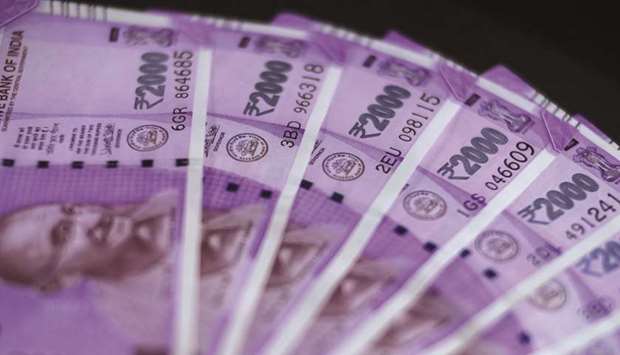Indian equities dropped, dragging local indexes to a second week of losses, as investors wait to see any government plans to bolster a slowing economy and arrest a liquidity crunch.
The benchmark S&P BSE Sensex retreated 0.7% to 39,452.07 points at the close in Mumbai, capping a second straight week of declines. The NSE Nifty 50 Index fell 0.8% to 11,823.30.
A rally of nearly 9% in India’s key equity indexes this year has prompted some investors to ponder whether the gains are too steep, too soon. India’s economy is slowing, while a cash shortage has triggered debt repayment defaults or delays among some local companies.
With a parliamentary session due to begin next week, investors are waiting for policies from Prime Minister Narendra Modi’s second-term to spur growth and increase liquidity.
“Key challenges for the markets would be news flow on oil, US plan on tariffs and India’s budget plans on how to stimulate investments ahead,” said Avinash Gorakshakar, head of research at Mumbai-based Joindre Capital Services.
“Valuations look expensive, but any correction and stock-specific approach should help investors in making some buy calls,” he said.
Eighteen of the 19 sector indexes compiled by the BSE fell, led by a gauge of property stocks. Seven of these measures dropped at least 1%.
Twenty-six of the 31 Sensex members and 39 of the 50 Nifty stocks declined.
IndusInd Bank Ltd’s 4.2% drop was the steepest among Sensex members, extending Thursday’s loss after UBS AG cut its rating on the shares to sell.
Gruh Finance Ltd slid 5% after parent Housing Development Finance Corp sold 4.2% of its stake in the company.
Meanwhile the rupee yesterday weakened for second sessions to hit two week low against the US dollar tracking losses in Asian currencies market on weak China data as risk sentiment remained fragile on trade and geopolitical concerns. Traders were also cautious after India decided to impose tariffs on 29 US products that may increase trade tensions between the two countries.
The rupee ended at 69.80 a dollar, a level last seen on May 30, down 0.41% from its previous close of 69.51. The Indian currency had opened at 69.58 a dollar.
Traders were worried due to attacks on tankers in gulf of Oman escalated US-Iran tensions and raised concerns over supply flows.
Earlier, China’s industrial output growth slowed to the weakest pace since 2002, highlighting the headwinds that the economy is facing as it grapples with the tariff war with the US.
President Donald Trump is still waiting for a response from Chinese President Xi Jinping about meeting to restart trade talks.
So far this year, the rupee has fallen 0.04% against the greenback. During the period, foreign investors bought $11.26bn in Indian equities and $1.35bn in the debt market.
Asian currencies were trading lower. Indonesian rupiah was down 0.31%, Philippines peso 0.26%, South Korean won 0.18%, Taiwan dollar 0.11%, China Offshore 0.05%. However, Japanese yen was up 0.14% and Thai baht 0.09%.
The dollar index, which measures the US currency’s strength against a basket of major currencies, was at 97.152, down 0.14% from its previous close of 97.01.

The rupee ended at 69.80 a dollar yesterday, a level last seen on May 30, down 0.41% from its previous close of 69.51
